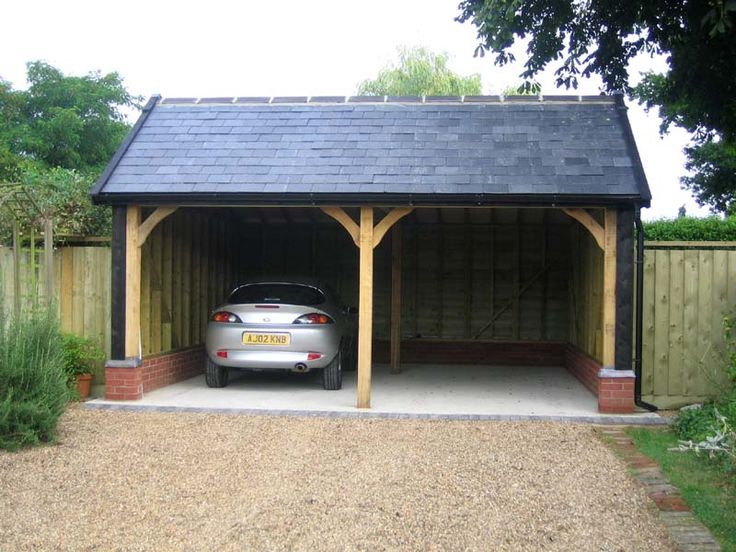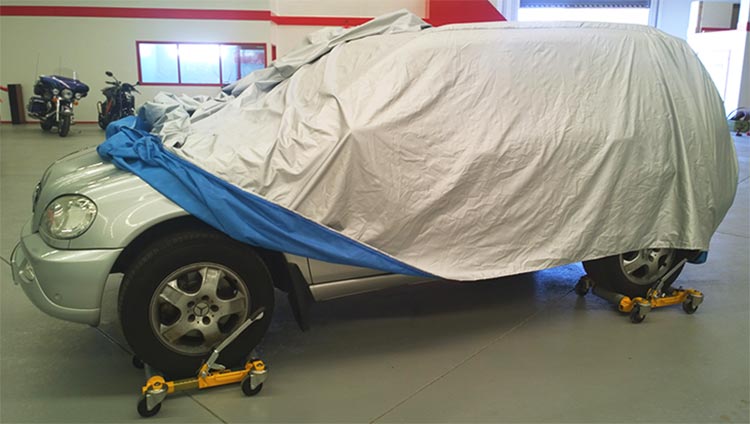For some reason, you must put your car away for an extended period, maybe a year or longer. There are things that you should keep in mind when storing vehicles. Storing your car is not just parking or covering your car but this process includes lots of steps. Let’s roll your sleeves and start the long term car storage.
Long-Term Car Storage: How To Make It Properly?
Do you know that if a car is unused for a long time it will break down more easily and cost more to repair than if it is driven regularly? Therefore, drivers need to pay close attention.
Car storage can be used in many different ways: some people store their cars for the winter months, or some people have a car collection and they need to store their vehicles…. If you’re planning to store your vehicle for a long term, these tips and checklist below may help you:
1. Clean and wash your car before storage

The owner needs to first wash the car and clean the interior before putting the car in the garage. Remove all mud and dirt from the vehicle’s body and wheels. After washing, dry and turn on the machine so that steam does not accumulate in the parts to prevent the metal parts from rusting.
Next is to clean up trash, food, and dust inside the seating compartment because if your vehicle is left unused for a long time, it will easily cause mold and unpleasant odors. Car owners should also use a specialized insect solution to spray some details in the engine compartment to limit mice and cockroaches from entering and nesting.
At the same time, take flammable objects such as lighters out of the car to avoid unwanted incidents. Electronic accessories such as car dash cameras, phone chargers, and USBs… should also be disconnected to ensure safety.
Additionally, you can apply protective wax. The wax acts as a protective layer for car paint, preventing fading due to the effects of the sun, dirt, grease, and rust.
2. Find the parking spot
After cleaning and letting your car dry, the owner chooses a clean, airy, covered area to park vehicles to limit the impact of environmental conditions such as rain, and sunlight,…
In case your vehicle must be parked outdoors, you should use a tarpaulin sheet to cover it. Tarpaulins can both limit the car’s direct exposure to sunlight and prevent mud from sticking to the exterior, causing rust. Do not park your vehicle on grass or soil because rising moisture can rust some car parts.
>> Related post: How To Back Into A Parking Space Like A Pro? Step-by-Step Guide

3. Check car battery
When your car is not used for a long time, the battery is the part most susceptible to damage and problems. Not starting for a long time causes some of the power inside the car battery to be lost.
To avoid this unwanted loss, car owners should be careful to turn off unnecessary electrical equipment in the car such as radio, phone charger, etc. When cleaning the car, you should remove the battery negative and start the engine for at least 15 minutes to recharge the car battery about once a week. However, avoid starting the engine in a closed space, because CO2 emissions will harm your health.
4. Inspect car tire
Another part that needs attention when a car is left unused for a period is the tires. Affected tire pressure puts pressure on the rubber surface, and the floor, easily causing deformation. To avoid this problem, drivers should regularly check their tire pressure and inflate them to a slightly higher pressure than standard. At the same time, about 2 times per week, you should move forward or backward at least 10 meters to allow the tires to move, and avoid deformation, and cracking to maintain the standard elasticity of the rubber.
5. Change the engine oil
In theory, if your vehicle is not running, it does not consume oil, but oil additives are gradually consumed over time, causing the quality of the oil to no longer be as good as the original. Therefore, it still needs to be replaced. The oil should be changed sooner rather than waiting for the number of mileage.
Old oil left in the engine over time can lead to damage, especially sludge buildup. So before deciding not to use your car for a long time, schedule a maintenance appointment, add coolant, check the brake fluid, and change the oil and new oil filter.
>> Read more: How Long Does an Oil Change Take?
6. Fill up the gas tank
Be sure to fill the fuel tank fully before not using it for a long time because this helps prevent oxidation of the fuel tank. Oxidation is a chemical reaction between fuel and oxygen that results in the formation of a precipitate in the fuel tank and can damage the vehicle if not cleaned properly before restarting.
Tighten the tank cap to avoid long-term moist air from entering, causing condensation, leading to gas suffocation, and making the car unable to start when left for an extended time. However, if the car is unused for more than 30 days without driving, the gasoline will degrade, and if your car is not driven for several months, the gasoline should be drained a bit.
7. Protect rubber details
If you do not have a garage and must leave your car outside, you have to pay attention to the rubber parts because they are susceptible to cracking and melting, especially in the summer and intense sunlight.
In addition, you should remove your car’s windshield wipers and store them away, or cover them with plastic wrap or a thin cloth. This will help keep the wipers from deteriorating and sticking to the windshield after many days of being unused.
8. Don’t use the handbrake (unless parked on a slope)
Generally, when parking a car, people will use the handbrake to stabilize the car and prevent it from drifting. However, if left like that for the long term, the force from the brake pad on the brake disc continues continuously, causing that position to concave, leading to the disc surface becoming rough and the brake operating unstable.
If you decide to leave the car for a long time, you should use an object such as a wooden board or rock to block the wheels.
Now, you know how to store a car long term with these 8 tips above. These tips can somehow keep your car in good condition during storage and limit deterioration.
Watch more:
FAQs
How often should you start a car in storage?
If possible, spend at least 10 to 15 minutes every week starting the vehicle and idling so oil and other fluids can circulate through the engine. Besides, without a battery charger, the engine needs to run longer to have more time to fully charge the battery. This will help preserve battery life and ensure your vehicle can start efficiently every time.
Starting the car periodically is crucial for long-term storage to maintain its health and prevent potential issues upon restarting it after a long period.
How long should you keep a car in storage?
There’s no exact answer to how long you can store a car, as it depends on several factors:
- Car conditions
- Storage environment
- Frequency of starting
…
Ideally, car experts recommend that you shouldn’t leave your car unused for more than two weeks to prevent unwanted repairs. But it’s still possible if you want to store your car for several months or even years depending on your car conditions.
What will happen If your car is not driven for a long time?
The car is not used for long periods, which unintentionally greatly affects the vehicle’s operating mechanism and details, especially the engine. In addition, faded car paint, deformed tires, moldy cars, and dead batteries… are problems that can occur if the car is not driven for the long term. Therefore, even if you don’t use the car, you must regularly check, start the car, and do regular maintenance to keep the car in stable condition.



